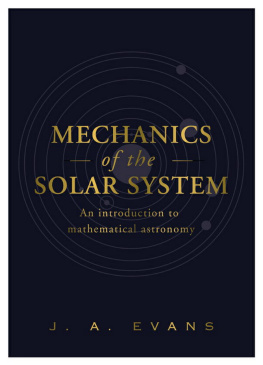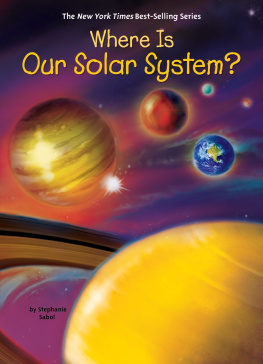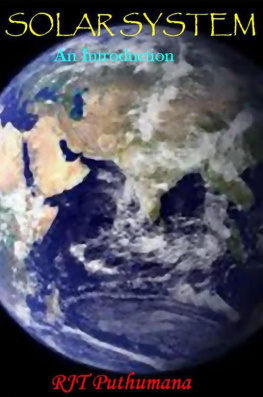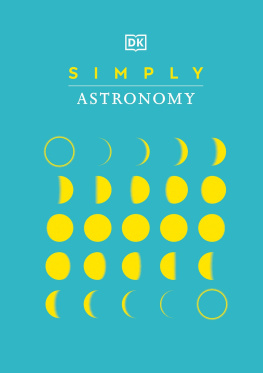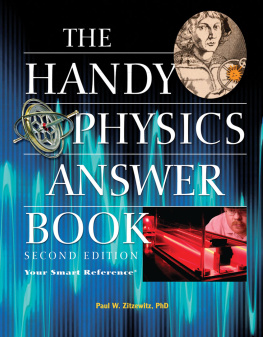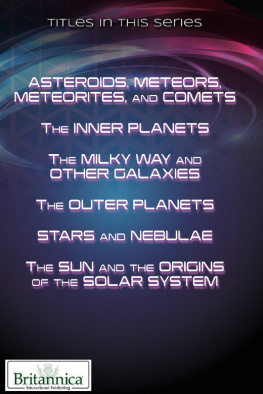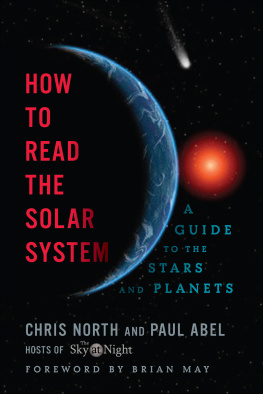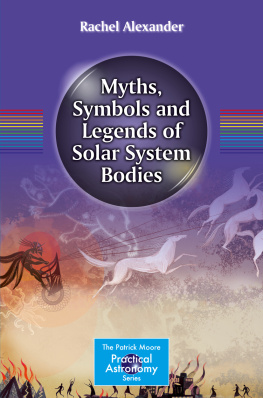J. A. EVANS - MECHANICS OF THE SOLAR SYSTEM : an introduction to mathematical astronomy.
Here you can read online J. A. EVANS - MECHANICS OF THE SOLAR SYSTEM : an introduction to mathematical astronomy. full text of the book (entire story) in english for free. Download pdf and epub, get meaning, cover and reviews about this ebook. City: S.l., year: 2021, publisher: BROWN DOG BOOKS, genre: Children. Description of the work, (preface) as well as reviews are available. Best literature library LitArk.com created for fans of good reading and offers a wide selection of genres:
Romance novel
Science fiction
Adventure
Detective
Science
History
Home and family
Prose
Art
Politics
Computer
Non-fiction
Religion
Business
Children
Humor
Choose a favorite category and find really read worthwhile books. Enjoy immersion in the world of imagination, feel the emotions of the characters or learn something new for yourself, make an fascinating discovery.
MECHANICS OF THE SOLAR SYSTEM : an introduction to mathematical astronomy.: summary, description and annotation
We offer to read an annotation, description, summary or preface (depends on what the author of the book "MECHANICS OF THE SOLAR SYSTEM : an introduction to mathematical astronomy." wrote himself). If you haven't found the necessary information about the book — write in the comments, we will try to find it.
J. A. EVANS: author's other books
Who wrote MECHANICS OF THE SOLAR SYSTEM : an introduction to mathematical astronomy.? Find out the surname, the name of the author of the book and a list of all author's works by series.
MECHANICS OF THE SOLAR SYSTEM : an introduction to mathematical astronomy. — read online for free the complete book (whole text) full work
Below is the text of the book, divided by pages. System saving the place of the last page read, allows you to conveniently read the book "MECHANICS OF THE SOLAR SYSTEM : an introduction to mathematical astronomy." online for free, without having to search again every time where you left off. Put a bookmark, and you can go to the page where you finished reading at any time.
Font size:
Interval:
Bookmark:

MECHANICS
of the
SOLAR SYSTEM
For Dorothy

First published 2021
Copyright J.A. Evans 2021
The right of J.A. Evans to be identified as the author of this work has been asserted in accordance with the Copyright, Designs & Patents Act 1988.
All rights reserved. No part of this book may be reproduced, stored in a retrieval system, or transmitted in any form or by any means, electronic, electrostatic, magnetic tape, mechanical, photocopying, recording or otherwise, without the written permission of the copyright holder.
Published under licence by Brown Dog Books and
The Self-Publishing Partnership, 7 Green Park Station, Bath BA1 1JB
www.selfpublishingpartnership.co.uk

ISBN printed book: 978-1-83952-234-5
ISBN e-book: 978-1-83952-235-2
Cover design by Kevin Rylands
Internal design by Mac Style
Printed and bound in the UK
This book is printed on FSC certified paper

Contents
Introduction
Mathematics and astronomy have been closely linked since antiquity, and mathematics has sometimes signposted major conceptual developments in astronomy. In the 16th century it was Copernicus discovery of serious inaccuracies in the predictions of Ptolemys algorithms which led him to his radical revision of the structure of the cosmos. In the next century Kepler used Brahes data on planetary positions to show that the planets move on elliptical, rather than circular, orbits. Later in the same century Newton demonstrated mathematically that, according to his laws of motion and gravity, a single planet would move in an elliptical orbit around a single star. Newtons work forged the first direct link between astronomy and physics. Keplers empirical laws of planetary motion are all derivable from Newtonian mechanics applied to a single orbiting planet.
This book presents numerous demonstrations of how mathematics can be used to compute planetary phenomena. While no prior knowledge of astronomy is required, a familiarity with basic algebra, trigonometry and calculus is assumed. Any serious work in this subject, such as the computation of planetary ephemerides, demands a familiarity with computer programming in a high level language such as Fortran. The text relies heavily on vector analysis and matrix algebra, and these areas of mathematics are treated in some detail in .
The main tool for calculating planetary positions and velocities is VSOP, as described in .
In addition to orbital elements, there are five other versions of the theory, designated AE as indicated below.
A. heliocentric rectangular coordinates ref. to equinox and ecliptic of J2000.
B. heliocentric spherical coordinates ref. to equinox and ecliptic of J2000.
C. heliocentric rectangular coordinates ref. to equinox and ecliptic of date.
D. heliocentic spherical coordinates ref. to equinox and ecliptic of date.
E. barycentric rectangular coordinates ref. to J2000.
The data given in the appendix of is a subset of that in version D.
The site also lists a Fortran source code which uses VSOP87 to calculate planetary positions.
Chapter 1
Time and Space in Astronomy
Astronomy is the science which studies the distribution and movements of stars, planets, comets etc. in the cosmos. Before going on, in later sections, to describe how the locations of celestial objects in space are recorded, we begin by discussing the measurement of time.
1.1 Time
Any regular periodic phenomenon can be used to measure time. As most human activity is carried out in daylight, and the most important in early civilisations, viz. agriculture, depends critically on the seasons, the Sun is a fairly obvious choice of timekeeper. However, many primitive cultures used the Moon and even hybrid combinations of Sun and Moon to measure long periods of time. This sometimes resulted in a chaotic situation with the calendar seriously out of step with the seasons. In a successful calendar, the equinoxes and solstices should occur on or very close to the same dates each year.
Julius Caesar found it necessary to reform the Roman calendar, which, as his biographer Suetonius wrote: the pontifices had allowed to fall into such disorder, by intercalating days or months as it suited them, that the harvest and vintage festivals no longer corresponded with the appropriate seasons. In order to achieve his reform he added 80 days to 46 BCE making it, with 445 days, the longest year in history. His new Julian calendar was inaugurated on the designated first day of 45 BCE January 1. The Julian calendar assumed that the mean tropical year (i.e. from vernal equinox to vernal equinox) contains exactly 365 days, and introduced the familiar leap-years of 366 days so that each four-year period contained 365 3 + 366 = 1461 days. The Julian calendar was in general use throughout the Christian world until the late 16th century and until much later in some countries.
1.2 Universal Time
The time used for everyday life in general, and astronomical observations in particular, must depend ultimately on the Sun, i.e. on the Earths diurnal rotation. This need is met by Universal Time (UT) which is based on observations of the transits of stars across the local meridians of observatories across the globe. These are converted from sidereal to solar time and corrected for the longitude difference from Greenwich. Such is the accuracy required that this last step is complicated by the fact that the longitude of a place on the Earths surface varies periodically by a few tenths of an arc-second. This is due to tiny motions of the Earths geographic pole relative to its rotation axis. Various periods are involved but the best known is the Chandler Wobble with a period of about 430 days.
The Sun is not a perfectly regular timekeeper because its apparent diurnal motion across the sky not only depends on the Earths axial rotation, but is affected by its orbital motion around the Sun. The orbital motion causes significant irregularities and, when these are ironed out, what is left is the mean sun.
Universal Time (UT) is defined by the motion of the mean sun through its Greenwich Hour Angle (GHA). The mean sun transits (i.e. crosses) the prime meridian at Greenwich at 12h.00 UT and one hour later, at 13h.00 UT, it transits the meridian at longitude W15 at which instant its GHA is 15 or 1 hour. Thus UT runs 0 to 24h from midnight to midnight and is equal to GHA (mean sun) plus 12 hours.
The difference GHA (Sun)GHA (mean sun) multiplied by 4 to convert degrees to temporal minutes, where the first term refers to the real Sun, is called the Equation of Time (EOT) and is a measure of the irregularity of the solar clock. At certain times of the year, the Sun lags or leads the mean sun by more than a quarter of an hour; but the EOT vanishes four times each year..

Figure 1.1
The equation of time on 2010, December 25.
Currently, a continuous, uniform timescale based on atomic clocks, which use a microwave transition in caesium to establish a frequency standard to an accuracy of 1 part in 1013, is available for scientific time-keeping. International Atomic Time (TAI), is established by the Bureau International de lHeure (BIH) in Paris through data from atomic clocks based in about 40 laboratories in different parts of the globe. Coordinated Universal Time (UTC) is another timescale based on atomic clocks. The rotation of the Earth is very gradually slowing down and therefore cannot be permanently in step with TAI. The process of slowing is irregular and unpredictable, and a leap second is occasionally added to the time lag, currently about 34 seconds, between UTC and TAI. This is usually done by giving the last minute of June 30 or December 31 one additional second. The difference between UT and UTC is monitored by the International Earth Rotation and Reference Systems Service (IERS), to keep the difference to less than 0.9 seconds.
Font size:
Interval:
Bookmark:
Similar books «MECHANICS OF THE SOLAR SYSTEM : an introduction to mathematical astronomy.»
Look at similar books to MECHANICS OF THE SOLAR SYSTEM : an introduction to mathematical astronomy.. We have selected literature similar in name and meaning in the hope of providing readers with more options to find new, interesting, not yet read works.
Discussion, reviews of the book MECHANICS OF THE SOLAR SYSTEM : an introduction to mathematical astronomy. and just readers' own opinions. Leave your comments, write what you think about the work, its meaning or the main characters. Specify what exactly you liked and what you didn't like, and why you think so.

